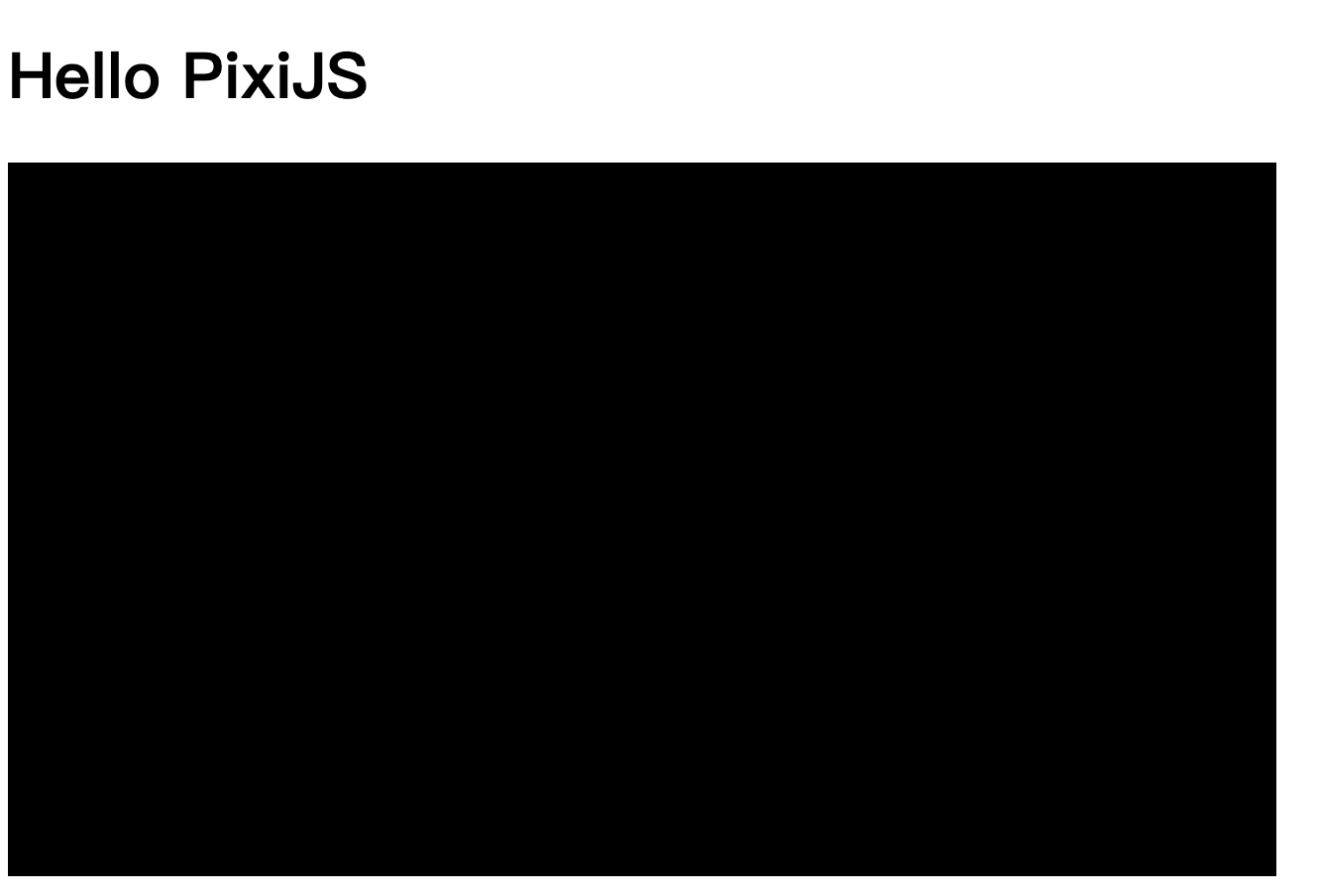快速开始
PixiJS 的核心是一个使用 WebGL(或 Canvas)显示图像或其他 2D 可视化内容的呈现系统。
它提供了一个完整的场景图(要呈现的对象的层次结构),并提供交互支持以处理点击和触摸事件。
在现代 HTML5 世界中,它是 Flash 的天然替代品,但却能提供更好的性能和像素级的效果,超越了 Flash 所能达到的水平。
它非常适合网络游戏、教育内容、交互式广告、数据可视化......任何基于网络的、需要复杂图形的应用程序。
与 Cordova 和 Electron 等技术相结合,PixiJS 应用程序可以作为移动和桌面应用程序在浏览器之外发布。
创建 pixi 应用
Application 是一个简化 PixiJS 工作的辅助类。 它能创建呈现器、创建舞台并启动一个用于更新的 ticker。
Application 类还有一个 init 方法,它将使用给定的选项初始化应用程序。因为 PixiJS 使用了 WebGPU,因此该方法是异步的。
<!DOCTYPE html>
<html lang="en">
<head>
<meta charset="UTF-8" />
<meta name="viewport" content="width=device-width, initial-scale=1.0" />
<title>Document</title>
<script src="https://pixijs.download/release/pixi.js"></script>
</head>
<body>
<h1>Hello PixiJS</h1>
<script type="module">
const app = new PIXI.Application()
await app.init({ width: 640, height: 360 })
document.body.appendChild(app.canvas)
</script>
</body>
</html>

创建 Sprite
到目前为止,我们所做的只是准备工作。 我们还没有告诉 PixiJS 绘制任何东西。 让我们添加一张要显示的图片来解决这个问题。
在 PixiJS 中绘制图像有多种方法,但最简单的方法是使用 Sprite。 Sprite 是一种容器类型,它封装了加载的图像资源,允许对其进行绘制、缩放、旋转等操作。
// load the PNG asynchronously
await PIXI.Assets.load('sample.png')
let sprite = PIXI.Sprite.from('sample.png')

将 Sprite 添加至 Stage
最后,我们需要将 Sprite 添加到 Stage 上。Stage 只是一个容器,是场景图的根。Stage 容器的每个子容器都将在每一帧中进行渲染。将 Sprite 添加到 Stage 后,我们就告诉了 PixiJS 的渲染器我们要绘制它。
app.stage.addChild(sprite)
更新 loop
虽然可以将 PixiJS 用于静态内容,但对于大多数项目而言,都希望添加动画。
示例应用程序希望每秒在同一位置多次渲染同一个 Sprite。
要使图像移动,我们只需每帧更新一次属性即可。为此,我们要挂钩应用程序的 ticker。ticker 是一个 PixiJS 对象,每帧运行一个或多个回调。
只需调用 app.ticker.add(...),给它传递一个回调函数,然后在该函数中更新场景。它将在每一帧中被调用,你可以移动、旋转等任何你想要的方式来驱动项目的动画。
// Add a variable to count up the seconds our demo has been running
let elapsed = 0.0
// Tell our application's ticker to run a new callback every frame, passing
// in the amount of time that has passed since the last tick
app.ticker.add((ticker) => {
// Add the time to our total elapsed time
elapsed += ticker.deltaTime
// Update the sprite's X position based on the cosine of our elapsed time. We divide
// by 50 to slow the animation down a bit...
sprite.x = 100.0 + Math.cos(elapsed / 50.0) * 100.0
})
all done
现在,我们已经创建了一个简单的应用程序,可以在浏览器中运行。
<!DOCTYPE html>
<html>
<head>
<script src="https://pixijs.download/release/pixi.min.js"></script>
</head>
<body>
<script type="module">
// Create the application helper and add its render target to the page
const app = new PIXI.Application()
await app.init({ width: 640, height: 360 })
document.body.appendChild(app.canvas)
// Create the sprite and add it to the stage
await PIXI.Assets.load('sample.png')
let sprite = PIXI.Sprite.from('sample.png')
app.stage.addChild(sprite)
// Add a ticker callback to move the sprite back and forth
let elapsed = 0.0
app.ticker.add((ticker) => {
elapsed += ticker.deltaTime
sprite.x = 100.0 + Math.cos(elapsed / 50.0) * 100.0
})
</script>
</body>
</html>